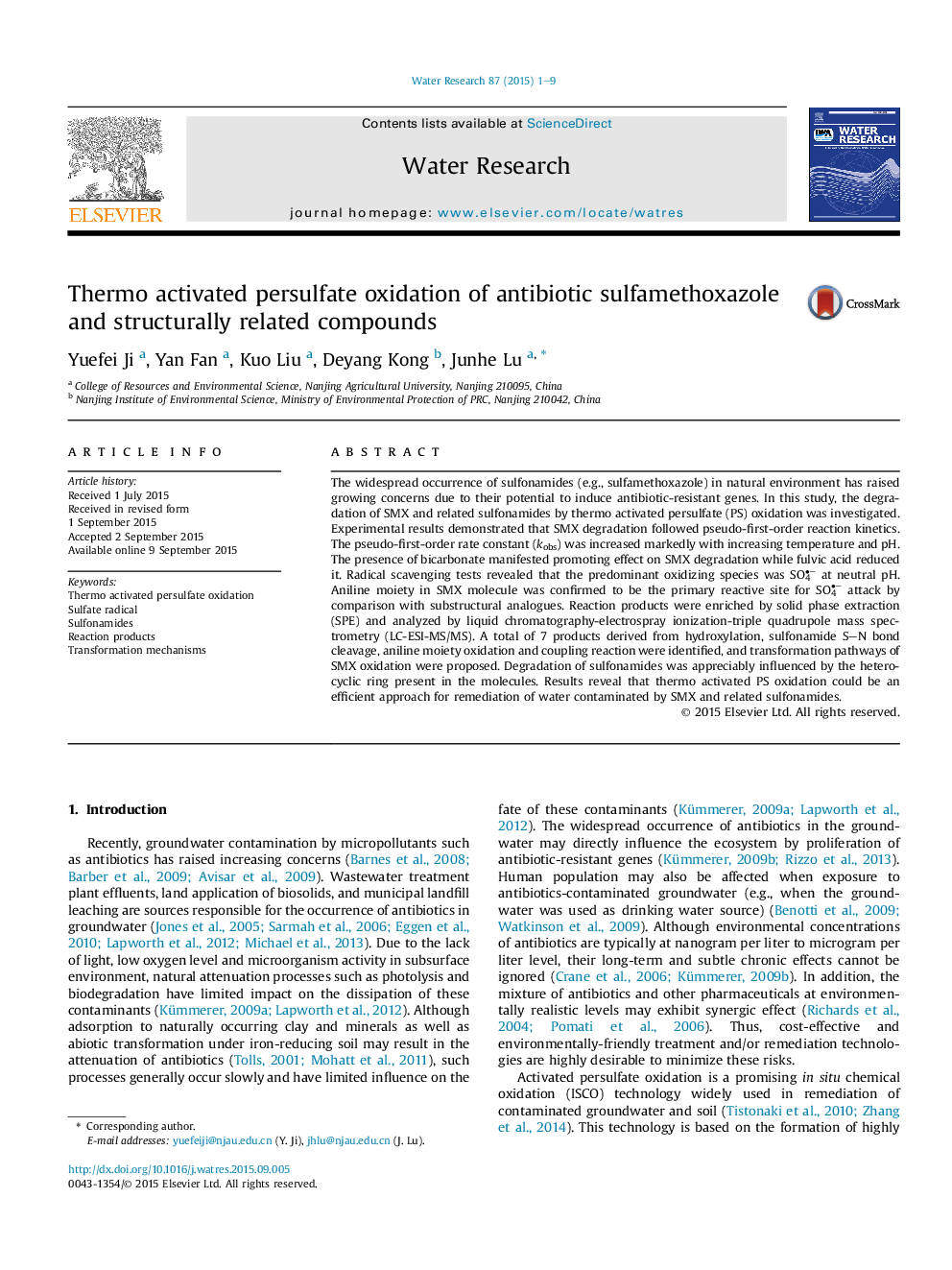| Article ID | Journal | Published Year | Pages | File Type |
|---|---|---|---|---|
| 6365940 | Water Research | 2015 | 9 Pages |
â¢Thermo activated persulfate induced sulfamethoxazole oxidation.â¢Sulfate radical was identified as predominant oxidizing species.â¢Aniline moiety in sulfamethoxazole molecule was the reactive site.â¢Degradation involved hydroxylation, δ-cleavage, oxidation and coupling reactions.â¢Heterocyclic ring affected sulfonamides oxidation significantly.
The widespread occurrence of sulfonamides (e.g., sulfamethoxazole) in natural environment has raised growing concerns due to their potential to induce antibiotic-resistant genes. In this study, the degradation of SMX and related sulfonamides by thermo activated persulfate (PS) oxidation was investigated. Experimental results demonstrated that SMX degradation followed pseudo-first-order reaction kinetics. The pseudo-first-order rate constant (kobs) was increased markedly with increasing temperature and pH. The presence of bicarbonate manifested promoting effect on SMX degradation while fulvic acid reduced it. Radical scavenging tests revealed that the predominant oxidizing species was SO4â¢â at neutral pH. Aniline moiety in SMX molecule was confirmed to be the primary reactive site for SO4â¢â attack by comparison with substructural analogues. Reaction products were enriched by solid phase extraction (SPE) and analyzed by liquid chromatography-electrospray ionization-triple quadrupole mass spectrometry (LC-ESI-MS/MS). A total of 7 products derived from hydroxylation, sulfonamide S-N bond cleavage, aniline moiety oxidation and coupling reaction were identified, and transformation pathways of SMX oxidation were proposed. Degradation of sulfonamides was appreciably influenced by the heterocyclic ring present in the molecules. Results reveal that thermo activated PS oxidation could be an efficient approach for remediation of water contaminated by SMX and related sulfonamides.
Graphical abstractDownload high-res image (126KB)Download full-size image
